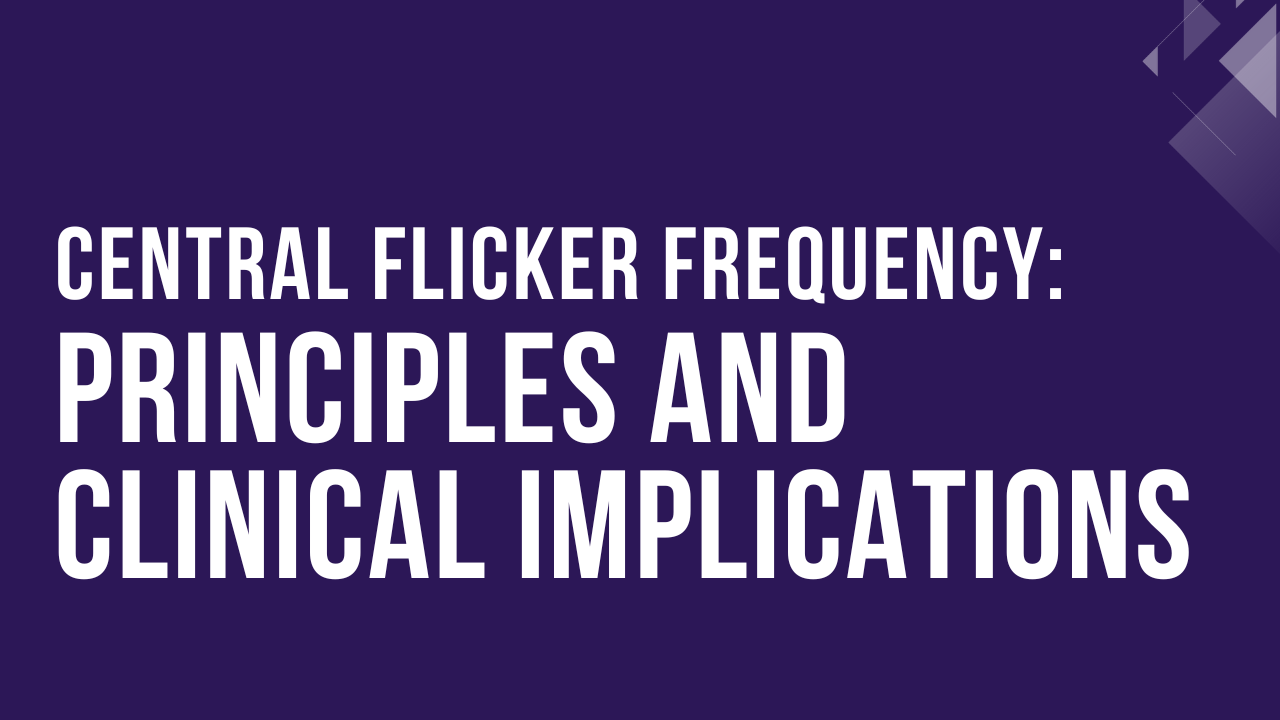What is Central Flicker Frequency (CFF) Testing?
Central Flicker Frequency (CFF) testing is a clinical method primarily used to assess the function of the optic nerve. It is a simple, non-invasive test often performed when optic nerve disorders are suspected.
The test involves viewing a flickering light through a specialized device, one eye at a time. The flickering frequency is gradually increased until the patient can no longer perceive the flicker — this is recorded as the descending threshold. Conversely, the test is also conducted from a high flicker frequency downward until the flicker becomes perceivable — the ascending threshold. The average of these two thresholds is used as the CFF value.
This value is measured in Hertz (Hz), and a CFF value of 35 Hz or above is considered normal.
Mechanism Behind Central Flicker Frequency (CFF)
Why can’t we perceive flickering light above 50 Hz?
This phenomenon is due to the refractory period of neurons — the short time after a neuron fires when it cannot respond to another stimulus. The refractory period is determined by the conduction velocity of the nerve.
In healthy optic nerves, stimuli faster than ~40 Hz exceed the processing capacity limited by the refractory period, making them indistinguishable as separate flashes. Thus, flicker fusion occurs.
In essence, CFF reflects the temporal resolution capability of the visual system, particularly involving the optic nerve and photoreceptors.
Conditions That Lower the Central Flicker Frequency
CFF values are notably decreased in conditions that affect the optic nerve, such as optic neuritis or optic neuropathy.
In optic neuritis, demyelination disrupts saltatory conduction — the rapid nerve signal propagation between nodes of Ranvier. This slows nerve conduction, extends the refractory period, and ultimately results in a lower flicker fusion threshold.
While optic nerve damage is a major cause of CFF reduction, retinal diseases can also contribute. In particular, disorders affecting cone photoreceptors, such as cone dystrophies, can lower CFF values.
This is because high-frequency flicker stimuli are primarily detected by cone cells, not rods. Rods cannot follow rapid stimuli, which is why flicker-based testing (like CFF or cone ERG) assesses cone function.
Summary
Central Flicker Frequency testing is a valuable, non-invasive tool to evaluate optic nerve and cone function. A reduction in CFF suggests delayed neural transmission, often seen in demyelinating or degenerative diseases. It complements other functional assessments like visual evoked potentials (VEP) and cone-specific ERG.




